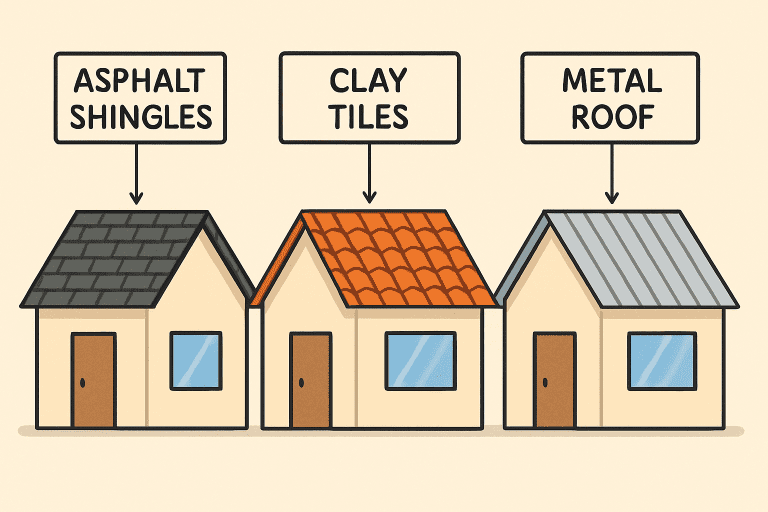Choosing the Right Roof for Your Home: A Comprehensive Guide

Table of Contents
- Introduction
- Understanding Your Home’s Architectural Style
- Evaluating Climate and Weather Conditions
- Assessing Durability and Lifespan
- Considering Energy Efficiency
- Budgeting for Your Roofing Project
- Maintenance Requirements
- Compliance with Local Building Codes
- Popular Roofing Materials and Their Characteristics
Introduction
Selecting a new roof is one of the most critical decisions you’ll make as a homeowner. Your roof protects against the elements and plays a pivotal role in curb appeal, energy efficiency, and increasing long-term property value. Whether building a new home or considering a roof replacement in Slidell, making an informed decision ensures your investment stands the test of time.
The variety of materials, evolving styles, and climate-specific considerations can make the process daunting. This comprehensive guide offers clear steps and crucial factors to help you choose the best roofing solution for your unique needs, budget, and local requirements.
Understanding Your Home’s Architectural Style
Every home’s architectural style has unique requirements and opportunities for enhancing its look with the right roof. Asphalt shingles are versatile and widely used with Cape Cod, Colonial, and Ranch-style homes. On the other hand, homes inspired by Mediterranean or Spanish design tend to look best with barrel-shaped clay tiles, accentuating the architectural details and color palette. Matching the roof type to the home’s design can strengthen the property’s aesthetic harmony, boosting pride of ownership and resale value.
Evaluating Climate and Weather Conditions
The climate in your region profoundly influences your roof’s performance. Asphalt shingles, metal, or synthetic materials excel at repelling moisture and preventing leaks in humid or rainy climates. In areas susceptible to hurricanes or high winds, consider impact-rated shingles or standing seam metal panels, which are engineered for superior wind and hail resistance. Fire-resistant materials like clay, slate, or metal are essential for homes in drought-prone areas. Evaluating these elements ensures you’re not just buying a roof that looks good, but one that will last.
Assessing Durability and Lifespan
Every roofing material offers a different balance of installation cost, expected life, and level of protection. While popular and affordable, asphalt shingles have a life expectancy of about 20 to 30 years. Metal roofs, made from steel, aluminum, or copper, can last 40 to 70 years with proper care. Clay and slate, among the most durable materials available, can endure 50 years or even a full century. While longer-lasting materials often require a higher upfront investment, their extended lifespan and lowered likelihood of premature replacement make them attractive over time. Consumer Reports offers detailed insights into roofing lifespans and performance.
Considering Energy Efficiency
The right roofing choice can reduce your energy consumption and carbon footprint. Light-colored metal roofs, clay tiles, and engineered “cool roof” shingles reflect solar radiation, keeping your interior cooler and reducing air conditioning demand in summer. In colder climates, insulated roofing systems help retain warmth, lowering heating costs. For homeowners seeking peak efficiency, integrating solar panels with compatible roofing materials further maximizes your home’s energy savings. Learn more about energy-efficient roofing options through the U.S. Department of Energy.
Budgeting for Your Roofing Project
Roofing projects come with a range of price points. Asphalt shingles typically offer the most budget-friendly option in materials and labor. Metal, slate, and clay tile roofs carry a higher initial cost, but their extended lifespan and minimal maintenance could mean better value over the decades. When evaluating roofing bids and contracts, it’s important to factor in not only the up-front expense but also future maintenance, repair costs, and potential energy savings.

Maintenance Requirements
Your willingness and ability to maintain your roof will influence your choice of materials. Asphalt shingles need periodic inspection for curling, cracking, or missing pieces, especially after storms. Metal roofs, in contrast, are resilient and require only occasional cleaning and checks for fastener or sealant wear. Wood shakes and shingles offer natural beauty but demand regular treatments against rot, insects, and algae. Understanding each material’s requirements helps reduce surprises and ensures your roof looks and performs its best.
Compliance with Local Building Codes
Before selecting your new roof, consult your city’s building department and your Homeowners Association (if applicable) to determine if there are restrictions or requirements for allowable roofing materials, colors, or installation practices. Some regions—especially those prone to hurricanes or wildfires—may mandate specific types of materials or installation standards to ensure community safety and insurance eligibility. Adhering to these codes and rules prevents costly penalties and legal headaches.
Popular Roofing Materials and Their Characteristics
- Asphalt Shingles: Widely used, affordable, and available in various colors and textures. Suitable for many architectural styles. Lifespan: 20–30 years.
- Metal Roofing: Highly durable, energy-efficient, and ideal for extreme weather conditions. Long lifespan with minimal maintenance. Lifespan: 40–70 years.
- Clay and Concrete Tiles are extremely robust and fire-resistant, perfect for Mediterranean, Mission, and Spanish-style homes. They are heavy and may require reinforced roof framing. Their life span is 50–100 years.
- Slate Roofing: The gold standard for durability and visual appeal, especially on historic or luxury homes. Very heavy and expensive to install. Lifespan: 100+ years.
- Wood Shingles and Shakes Deliver a timeless classic natural look, but they need consistent maintenance for fire, rot, and insect resistance. Their life span is 30–50 years.
Weighing all these aspects—architectural style, climate, durability, maintenance, energy efficiency, and regulatory requirements—empowers you to select a roof that fits your home and lifestyle. The right roof elevates curb appeal and provides vital protection, comfort, and value for years to come.

